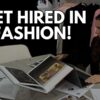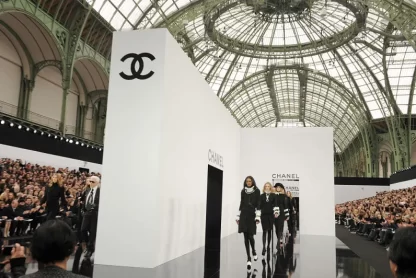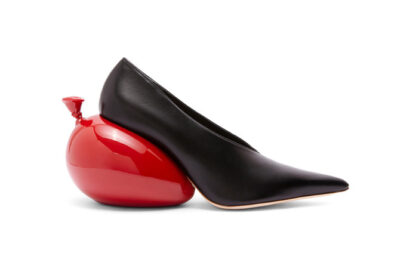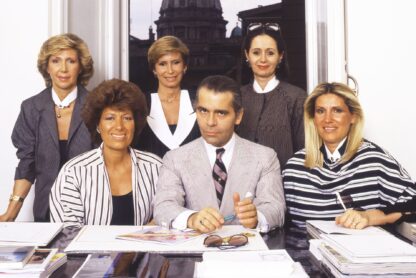What’s the first brand that comes to your mind? Chances are it’s Chanel. The captivating founder Gabrielle Coco Chanel, immortalized in many photographs wearing her iconic tweed suit, the 2.55 handbag, and pearls, changed women’s fashion forever with her groundbreaking perspective on style. The arrival of Karl Lagerfeld in 1983 opened a new chapter for the Maison, which lasted for 36 years until he died in 2019 and was succeeded by Virginie Viard. Let’s explore the comprehensive history of the Maison Chanel.
The early years of Coco Chanel
Gabrielle Chanel was born in Saumur, France on August 19, 1883. Throughout her life, she was a wealthy and famous fashion designer. However, just like many fashion professionals, she started from nothing. She was the daughter of a peasant and a street vendor and was born in a poorhouse. After her mother passed away, she was sent to an orphanage in a convent. She stayed here from age 12 to 18 with her 2 sisters and 2 brothers. They are all forced to work. The nuns taught her how to embroider, iron, and sew.
The story behind Coco Chanel’s nickname
At 23 years old, Gabrielle Chanel was singing at a cabaret called La Rotonde to make a living. It was there she picked up the name “Coco” and has been famously referred to as “Coco Chanel”.
History Timeline
1910: the Maison Chanel is founded in Paris
Did you know that before she became a fashion designer, Coco Chanel started as a milliner?
When she was 24 years old, Gabrielle Coco Chanel became the mistress of Etienne Balsan. He is a wealthy textile heir who introduced her to a luxurious lifestyle. She started designing hats for her friends. Then, she opened a hat boutique in 1910 at 21 rue Cambon under the name Chanel Modes with the help of new lover Arthur “Boy” Capel. Her hats were worn by well-known French actresses of the era and helped build her reputation.
1912: Mademoiselle Chanel opens the first boutique in Deauville. From 1913, she began to sell a line of sportswear made of jersey. It is a material that was previously used to make men’s underwear. The jersey sweater became the first garment one pulled over their head. It eliminates the effort for women to tie it and deal with lots of lace and buttons.

© Collection Deauvilloise, Deauville (France)
1915:
Encouraged by her success, Mademoiselle Chanel opens her first Couture House in Biarritz, France. She employs 300 workers and designs her first Haute Couture collection.
1918:
Gabrielle Chanel moves her boutique and atelier to the building at 31 rue Cambon. Her apartment was situated above the ground floor. Today, it remains furnished with her pieces but is not accessible to the public.
1921:
Launch of the first perfume Chanel N°5. Composed by Ernest Beaux who used aldehydes, it was “a woman’s perfume, with the scent of a woman”, as Coco Chanel said. She thought the number 5 brought good luck, especially because she was a Leo, which is the fifth sign of the zodiac.
After Chanel N°5, the Maison launched other perfumes including the N°22 (1922) and Gardénia (1925).
1924:
Chanel begins producing and selling perfumes and cosmetics. Ernest Beaux was the first in-house perfume designer.
1925:
Creation of the Chanel logo, composed of two bold interlaced “C”s that mirror each other. But what does it represent? There are different theories and legends about it.
What does the Chanel logo represent?
At first glance, the Chanel emblem seems pretty straightforward in its meaning, simply representing the first and last name of Coco Chanel. Another official version of the House is that the logo was inspired by the geometric patterns of stained glass windows in the chapel at the Aubazine monastery, where Coco Chanel spent most of her childhood. There is also a romantic legend surrounding the history of the iconic Chanel logo, claiming the two “C”s stand for Chanel and Capel, symbolizing the love Coco and English aristocrat Arthur “Boy” Capel shared through the years back in the1910s-20s.
Coco Chanel revolutionized the concept of black as the ultimate fashion color and it became the signature color of the House, which perfectly represents its prestige, and stands for elegance and sophistication. Contrary to many other brand logos, the Chanel logo has never been altered, which is a way of showing that the brand is timeless.
1926:
Chanel introduces the Little Black Dress in Vogue. It was the first black dress that could be worn outside of the funerals and mourning period.

1927:
Launch of the first beauty products with a complete range of 15 skincare products.
1932:
Gabrielle Chanel presents BIJOUX DE DIAMANTS, her only High Jewelry collection of more than 45 pieces, in her mansion at 29, rue du Faubourg-Saint-Honoré.

1939:
During World War II, Gabrielle Chanel closes her Couture House. Of the five rue Cambon buildings, only the 31 boutique remains open, where perfumes and accessories continue to be sold.
During World War II, Chanel lived at The Ritz, where she remained for the rest of her life. There were rumors that she was a Nazi spy, as the hotel was frequented by Germans during the war. She then sought refuge in Switzerland for several years.
1954:
At age 71, Gabrielle Chanel decides to reopen her Couture House, with a fashion show event on February 5th, which was extremely well-received by the American press. Curiously, the most famous pieces of Chanel were launched after the reopening of the house.
1971:
Coco Chanel dies at The Ritz Hotel in Paris, where she lived for 34 years.
Chanel 2.55 bag history
The Chanel 2.55 bag is one of the most iconic fashion accessories ever designed by Gabrielle Coco Chanel. It was first introduced in 1929. The exterior was initially made of quilted wool, inspired by the saddle blankets at the horse races she frequented. Later, to celebrate the reopening of her boutique in 1954, Gabrielle Chanel reintroduced the following year her iconic double flap bag, naming it 2.55 after the date of its creation – February 1955.
The 2.55 was a revolutionary handbag. Before Chanel’s masterpiece, handbags were only worn with grab handles. Can you imagine a time when this was your only option? That’s why the 2.55 bag with a shoulder strap was such an innovation, born with a desire to be carried hands-free. Chanel always kept practicality in mind for women. This timeless staple features the ‘mademoiselle lock’ designed by Coco herself.
Chanel Tweed Suit
In 1954, Chanel introduced her emblematic Tweed Suit. She discovered the tweed while living in Scotland in the mid-1920s. She was dating the Duke of Westminster and occasionally borrowed his clothes because they felt practical. This set the groundwork for working with tweed, first introduced in 1925. What’s curious is that this fabric used to be reserved for menswear, but it was so comfortable that Chanel started using it in womenswear but mixed it with silk and wool to create a lighter and more polished fabric. Just as with everything she designed, this item was born with the desire to liberate women from the conventional norms of dressing up and offer practical, yet feminine clothes. Indeed, the French designer sought to dress women “in suits that make them feel at ease, but that still emphasize femininity.”
Chanel Two-Tone Pumps
To complement the look, Coco Chanel also wanted to create the perfect shoe that women could wear day and night, for sports, work, or leisure, and move around without feeling any discomfort. And so, in 1957, Coco Chanel launched her iconic two-tone pumps, although she started wearing them long before they were officially launched on the market.
The shoes were just as elegant and versatile as her wardrobe essentials, designed to be worn with every look, and for any occasion day and night. “They are the last point of elegance,” Coco Chanel once said. The beige was used to lengthen the legs while the black toe cap was meant to make the feet look shorter and protect the tip from wear and tear. The 5cm heel ensured comfort and greater freedom of movement without the feet getting tired.
How Karl Lagerfeld reinvented Chanel
In 1983, Karl Lagerfeld arrived at Chanel and presented his first Fall-Winter Haute Couture collection.
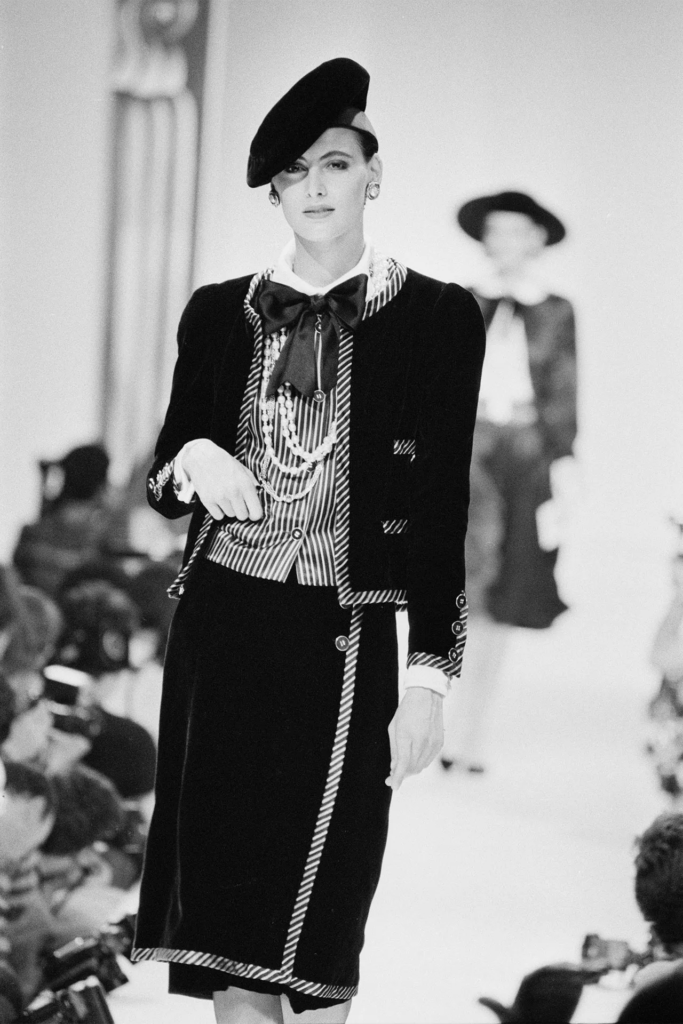
In addition to restoring Couture and ready-to-wear to their former glory, Lagerfeld expanded Chanel’s accessories and beauty range with the launch of the Coco and Coco Mademoiselle perfumes (1984 & 2001), watches (1987), fine jewelry (1993), and adding the interlocking C logo on the iconic 2.55 bag. He also staged the first fashion show for the Cruise collection (2000) and Métiers d’Art collection (2002) and made the Grand Palais a regular location for the house (first in 2005).
Iconic Fashion Shows
When Karl Lagerfeld was at the helm of Chanel, a magical show at Paris Fashion Week was always guaranteed. The most epic Chanel shows were staged at the Grand Palais, the regular and favored location of the Maison since the first show in 2005.

Since then, Karl Lagerfeld transformed the Grand Palais multiple times: a magical underworld for Spring-Summer 2012, a fully-functioning supermarket for Fall-Winter 2014, a casino for Couture AW 2016, an airport at the SS 2016 couture show, and the Chanel atelier in AW 2016.
For his final Chanel show, before he passed away, Karl Lagerfeld reimagined the Grand Palais into an alpine winter wonderland, which the brand called, ‘Chalet Gardenia’.
Virginie Viard at Chanel
First joining Chanel in 1987 as an embroidery intern, Virginie Viard was Lagerfeld’s right-hand and oversaw couture, ready-to-wear, and accessories collections. Also, the late designer famously described her as “my right arm…and my left arm”.
After the death of Karl Lagerfeld, Virginie Viard took over as Artistic Director in 2019, debuting her first solo collection with a Cruise 2020 show in Paris.

Virginie Viard left the Maison in June 2024. So, her successor hasn’t been named yet and we are very eager to discover who it will be.
What’s your favorite moment from the history of Chanel?
If you dream of working at Chanel, read this article.
Follow us on Instagram for more updates!
